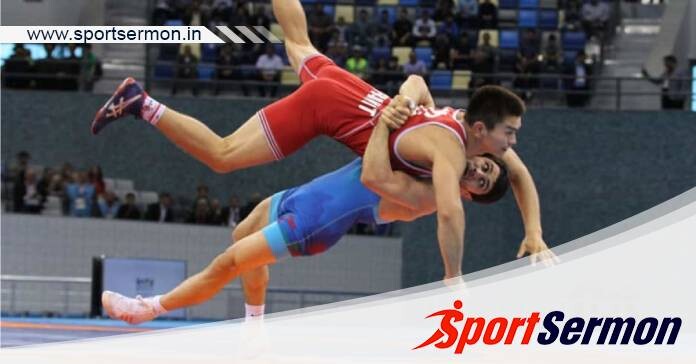Wrestlers Transitioning into MMA: If you’re considering making the move to mixed martial arts, one of the greatest foundations to have is wrestling. More significantly, it enables you to maintain a fight where you choose it to be—on the ground, in a clinch, or standing up. It teaches you how to dominate and manage your opponent on the mat.
With the way that MMA bouts are assessed on aggressiveness, efficient hitting, and cage management, that’s ideal.
For those who have wrestled before, the transition to mixed martial arts is much simpler because wrestlers must gain weight for competitions, just like MMA fighters. Furthermore, few other combat sports impart hardiness in the same manner as wrestling does. You get the ability to force your will on opponents and to push your body past fatigue.
It is hardly unexpected that wrestlers have dominated mixed martial arts because wrestling has so many advantages as a basis. The success of wrestlers who make a proper transition into mixed martial arts is exemplified by Ben Askren, Daniel Cormier, Cain Velazquez, and Jon Jones.
Tips For Wrestlers Who Are Transitioning into MMA
If you’ve wrestled for years and are considering trying mixed martial arts (MMA), there are a few things you can do to make the transition much easier:
1) Commit to at least one visually arresting piece of art.

It’s called mixed martial arts for a reason. Being proficient in just one area of combat is no longer sufficient. Yes, it was effective in the early days of mixed martial arts when most fighters were specialists in just one technique, but times have changed since then. Today’s average mixed martial artist is skilled in a variety of fighting techniques, and even those who first appear to be one-trick pony, like Damian Maia and Khabib Nurmagomedov, are actually far more well-rounded than they look.
Make sure other martial arts complement your background in wrestling. Start with a martial art that emphasises striking, as you currently possess mastery over one grappling technique. Make sure you feel comfortable standing up and exchanging punches with an opponent because MMA bouts begin standing up. You need to put in extra sparring time if you feel uncomfortable striking someone for the whole duration of an MMA battle.
Keep in mind that wherever you choose to compete, you won’t be the only MMA fighter with a wrestling background. You should be ready for the potential that you will encounter an opponent that you are unable to defeat.
Excellent striking martial arts to combine with wrestling include boxing and muay Thai. Boxing is a popular style among wrestlers because it keeps your feet firmly planted on the ground as you hit, which makes it more difficult for your opponent to close the distance on you.
Ben Askren disclosed that from the beginning of his MMA journey, he made the decision that his striking defence, not his striking offence, would have to be his “best friend.” If you decide to switch to MMA, bear this advice in mind.
You might also be interested in reading this: 4 Wrestling Takedowns For MMA Every Fighter Should Know
Adopt Brazilian Jiu-Jitsu.

Various grappling martial arts engage in a form of competition. This can occasionally result in pupils of one style being unable to recognise the advantages of another. Considering that practitioners of many martial arts may benefit greatly from one another, that is a grave error. For instance, a BJJ fighter can improve their effectiveness by using judo or wrestling techniques for takedowns and takedown defence.
Similarly, mastering the application and defence of submissions can improve your effectiveness as a wrestler in a cage. Submissions are grappling’s version of a knockout blow, allowing you to terminate a battle from even positions that are normally regarded to be disadvantaged.
Applying submissions naturally strengthens your defences against them since you know what your opponents are attempting to do.
Since BJJ teaches you how to finish your opponent from positions that wrestling teaches you how to obtain, it is the most complementing grappling discipline you can study as a wrestler. It also doesn’t hurt to add a couple judo or sambo throws to your arsenal.
3) Work out with a skilled mixed martial arts team

Make sure you identify some MMA fighters who share your beliefs so that you may practice with them. Iron sharpens iron. Your group will act as a safety net, encouraging you when you need that additional push. They’ll also make sure that while you’re in the gym, you’re exerting the proper amount of effort.
Additionally, you must practice under several qualified MMA teachers. That cannot be replaced in any way. Make sure your instructor is knowledgeable with the nuances of mixed martial arts, as they are becoming a genuine combat technique in their own right.
Above all, don’t forget to assemble everything. It will take a lot of time for you to blend these many techniques together on the mat. Your ability to seamlessly switch between different facets of martial arts will be the determining factor in your success as an MMA fighter. You should be able to switch between styles with ease.
You’ll be more prepared for battles if you have a strong MMA squad by your side. Your sparring partners, who have a wealth of mixed martial arts expertise, will be a great source of information, so you’ll be more likely to peak when it’s appropriate and gain weight without any issues. Additionally, your training partners will provide you with advice on how to overcome anxiety and maintain composure.
Make sure your instructors are capable of handling your corner during bouts, as they will most likely be in charge of it. Many fighters have lost significant battles due to inept corner crews. What happens when cornermen lack experience and knowledge is exemplified by Mike Tyson’s very incompetent corner during his bout with Buster Douglass.
If you adhere to the aforementioned three pointers, wrestlers transitioning into mma will be easy.

